|
|
Post by linefacedscrivener on Mar 15, 2021 9:16:57 GMT -5
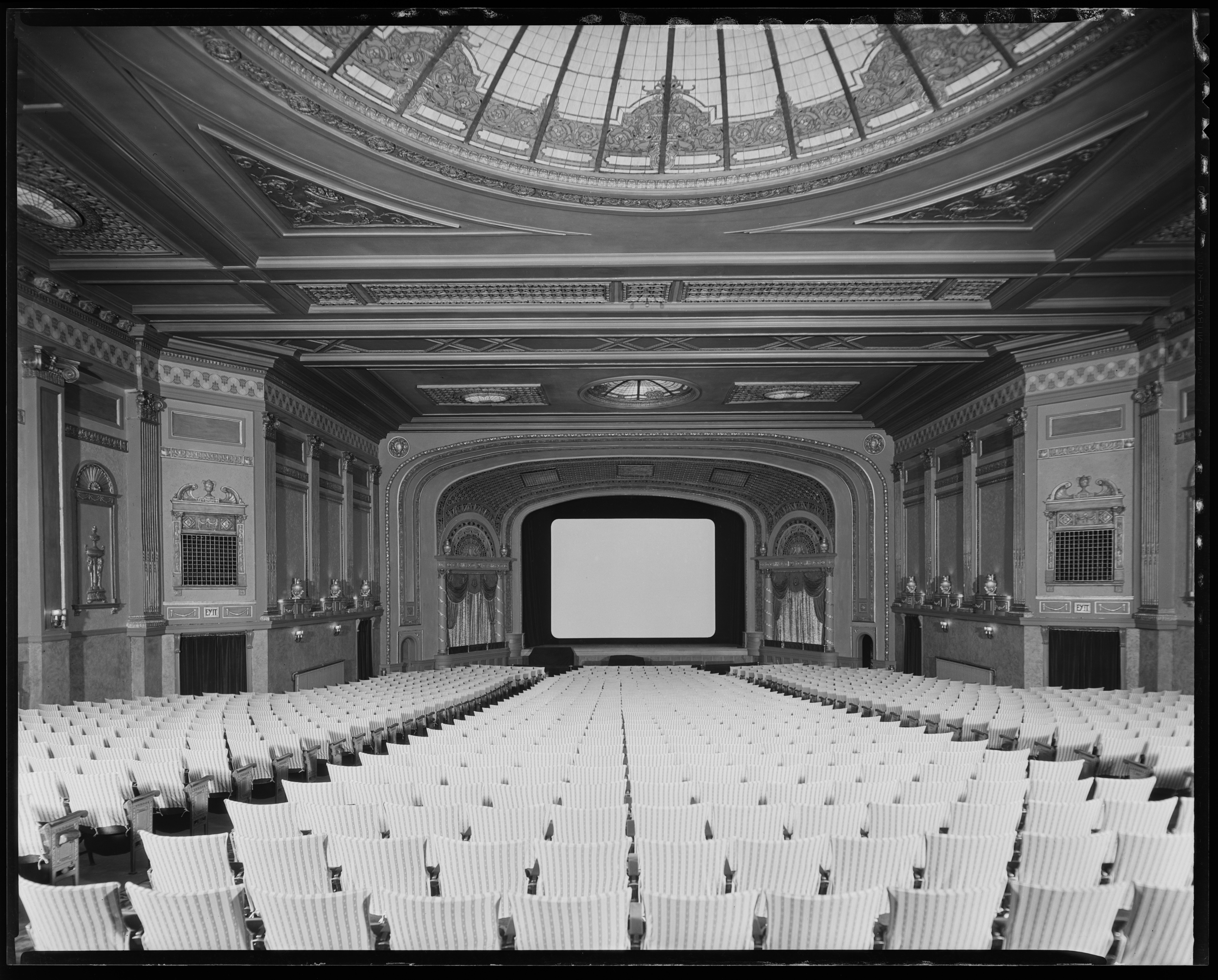 “Have you seen any movies lately?” —Robert E. Howard to Tevis Clyde Smith, week of February 20, 1928 Robert E. Howard loved going to the movies. In his letters, he often asked his friends if they had seen any movies lately and would then share with them the movies he had seen or wanted to see. He often reviewed the films, giving his perspective of what he liked or what was wrong with the movie. He also noted his favorite actors and actresses, as well as the ones he deplored. Although films were really just beginning to become a mainstay of American life, Howard’s take on the movie seems no different than our modern-day discussion of movies and actors, both good and bad. As I have been writing a series of columns titled "Howard at the Movies" for REHupa, which by those interested seems to have been well received, I thought I would start the same series here on The Swords of Robert E. Howard. The benefit of doing it here is I can incorporate more pictures, embed or provide links to the actual movies if they are available on the Internet, and spend time posting on the director, actors/actresses, as well as providing some historical background on the film. As it is never truly known when Howard watched the film, I will post in order of their release date, so the early ones may no longer exist or, if they do, they will be silent films. In addition to Howard's comments on the film, I will also post Howard's rating of the movie using a five-star rating based on Howard's comments or review of the film: * = Howard did not like the movie ** = Howard did not like the movie but found at least some redeeming quality *** = Howard is neutral on the movie, he either considered it okay or saw it and made no comment good or bad **** = Howard liked the movie and made positive/negative comments about it ***** = Howard clearly demonstrated high praise for the movie I will still post on "An Unborn Empire" from time to time, but I like the idea of moving on to something different for a change. Also, I realize there is a Movies thread under General Discussions, which is for films Howard would have liked, but this thread will be about films where it is known that Howard actually saw the movie and mentioned it in something he wrote. I hope you all enjoy the new thread. |
|
|
|
Post by linefacedscrivener on Mar 15, 2021 9:29:28 GMT -5
 A Desert Bridegroom (1922) A Desert Bridegroom (1922)
“I’ve seen . . . A Desert Bridegroom, Jack Hoxie.” —Robert E. Howard to Tevis Clyde Smith, October 5, 1923 Release Date: May 29, 1922 REH Rating: *** This is the first film that Howard comments on in a letter to his friend, Tevis Clyde Smith. In the letter, he actually lists a number of films he had watched recently. Keeping in mind, Howard is 17 years old at this point in his life. Not only does Howard not say much about this particular movie, there is also not a lot of information regarding this film. While it is not on the list of "Lost Films" according to the Library of Congress and an Italian website states a copy of the film is preserved in Brussels, Belgium, there is scant information on the film's existence today. We do know that it was a film produced by Ben Wilson, ran for 50 minutes, and was distributed on 5 reels. The American Film Institute presents the following synopsis for the film: “Jack Harkins, sheriff of Stony Ridge, goes in search of Red Saunders, who caused the death of Jack's sister, and incurs the enmity of the townsmen in Cactus Center. Saunders, who is forcing his attentions on Matilda Ann Carter, a wealthy young heiress, is frightened by the approach of Harkins. Ann shields him from his pursuers and leads him to Saunders, to whom he gives a fierce beating. Saunders feigns death, and Harkins is sought for murder but manages to expose the ruse. All ends happily.” |
|
|
|
Post by linefacedscrivener on Mar 18, 2021 9:33:09 GMT -5
 “I’ve seen . . . A Desert Bridegroom, Jack Hoxie.” —Robert E. Howard to Tevis Clyde Smith, October 5, 1923 Jack Hoxie was born in raised in the Oklahoma Territory and began roping and riding at an early age. He toured in a Wild West show before going to Hollywood. At first, he worked as a stuntman, but soon landed several roles in some low budget B movies. In 1921, he was picked up by Universal Pictures and began making many popular films. His name continued to grow and, in 1926, he appeared as Buffalo Bill Cody in The Last Frontier, alongside co-star William Boyd who later became famous with the character Hopalong Cassidy. Perhaps getting too big for his boots, he ended up in a contract dispute with Universal Pictures and refused to renegotiate a contract. His career then began working in reverse. He was forced to make B movies and eventually ended up back with the Wild West shows and rodeos. This is the only known film that Howard watched that featured Jack Hoxie, but as he was making numerous movies throughout the 1920s, there is a good chance Howard saw some of his other films, especially with such names as Two-Fisted Jefferson (1922), The Forbidden Trail (1923), and Fighting Fury (1924). For more information on Jack Hokie, see his Wikipedia page: en.wikipedia.org/wiki/Jack_Hoxie and his IMDB page: www.imdb.com/name/nm0398300/ |
|
|
|
Post by linefacedscrivener on Mar 19, 2021 14:09:15 GMT -5
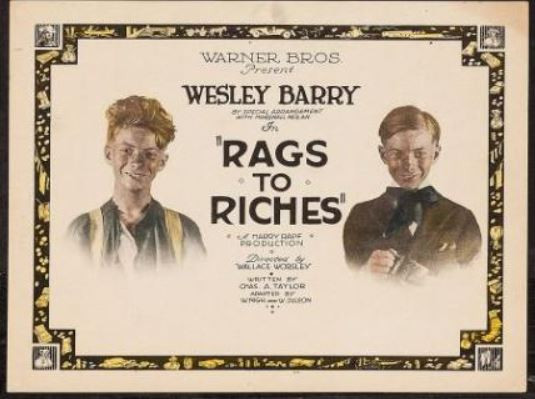 Rags to Riches (1922) Rags to Riches (1922) “I’ve seen From Rags to Riches again here . . . “ —Robert E. Howard to Tevis Clyde Smith, October 5, 1923 Release date: September 24, 1922 REH Rating: ****With the “again here,” Howard is referring to having seen it in Cross Plains. There is a good chance he saw it for the first time in Brownwood. Although Howard did not say much about the movie, the fact that he watched the movie a second time suggests that he liked it well enough. The experience of going to the movies may still have been relatively new, so the thrill of seeing any movie, even one he had already seen, may have been enough motivation to watch the film again. Still, seeing it a second time, I would say Howard gave it four stars. There is not much written about this particular movie. It does not show up on the Internet like many other films of this era. The best description of the movie’s story comes from the American Film Institute: “Marmaduke Clarke, a wealthy boy in search of adventure, leaves home to join a gang of crooks. He and Dumbbell strike out by themselves and find work on a farm. Dumbbell falls in love with Mary Warde, but they incur the wrath of the Purist's League when they go to a dance. When a Purist's League delegation, the sheriff, the Clarkes, detectives hired by Mr. Clarke, and the gang of crooks intent on kidnaping Marmaduke, Dumbbell, and Mary all meet up together, Dumbbell reveals himself to be Ralph Connor, Secret Service agent, and turns the gang over to the sheriff.” |
|
|
|
Post by linefacedscrivener on Mar 22, 2021 12:11:39 GMT -5
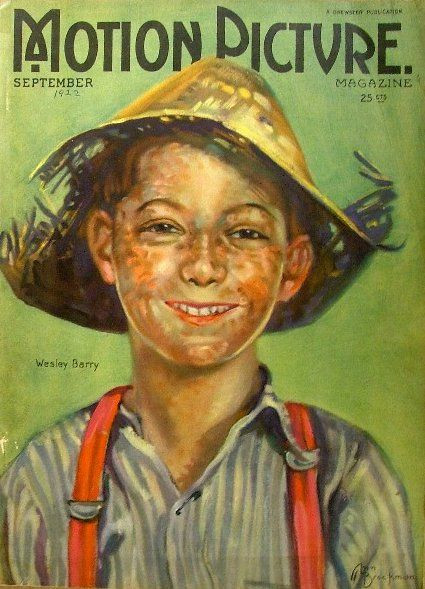  Rags to Riches (1922) Rags to Riches (1922)
“I’ve seen From Rags to Riches again here . . . “ —Robert E. Howard to Tevis Clyde Smith, October 5, 1923 The lead character in the film Rags to Riches, Marmaduke Clarke, was played by child actor Wesley Barry (August 10, 1907 – April 11, 1994). Barry was a Hollywood native who was discovered and cast in the film Rebecca of Sunnybrook Farm (1917) at ten years of age. Over the next eight years, he appeared in numerous films that were popular with American audiences throughout the 1920s. He was described as a natural for the camera and an all-around American boy. When he grew into adulthood, at about the same time the silent films gave way to "talkies" (1928-1929), he met the fate of many childhood and silent film stars, he could no longer find employment in front of the camera. Although he appeared in approximately another dozen films, his star power was gone, so he began a lifelong career of working behind the camera. Rags to Riches was produced by Warner Brothers Pictures for $96,000 and it made $447,000, making it a very profitable movie. The film was 70 minutes long and was sent out on 7 reels. Although not on the Library of Congress list of lost films, the film is unavailable through any normal channels (though lots of suspicious websites seem to suggest they have it). 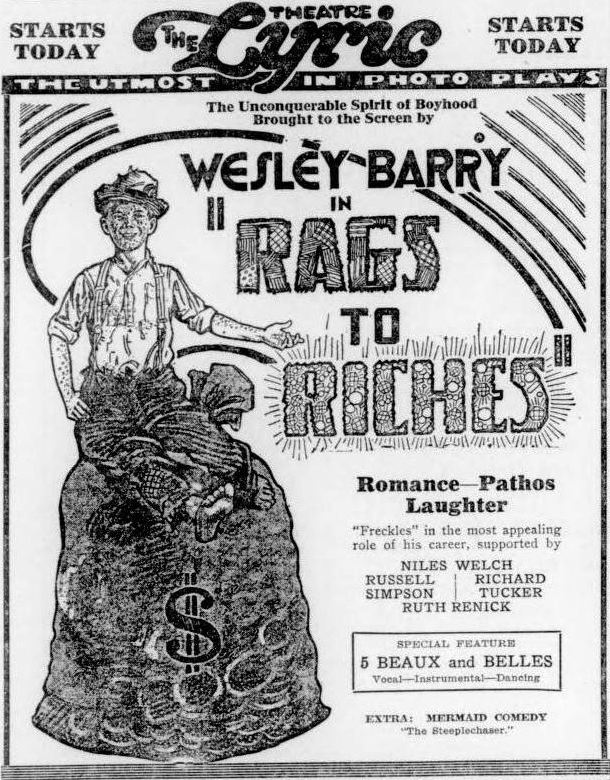 |
|
|
|
Post by linefacedscrivener on Mar 23, 2021 13:44:10 GMT -5
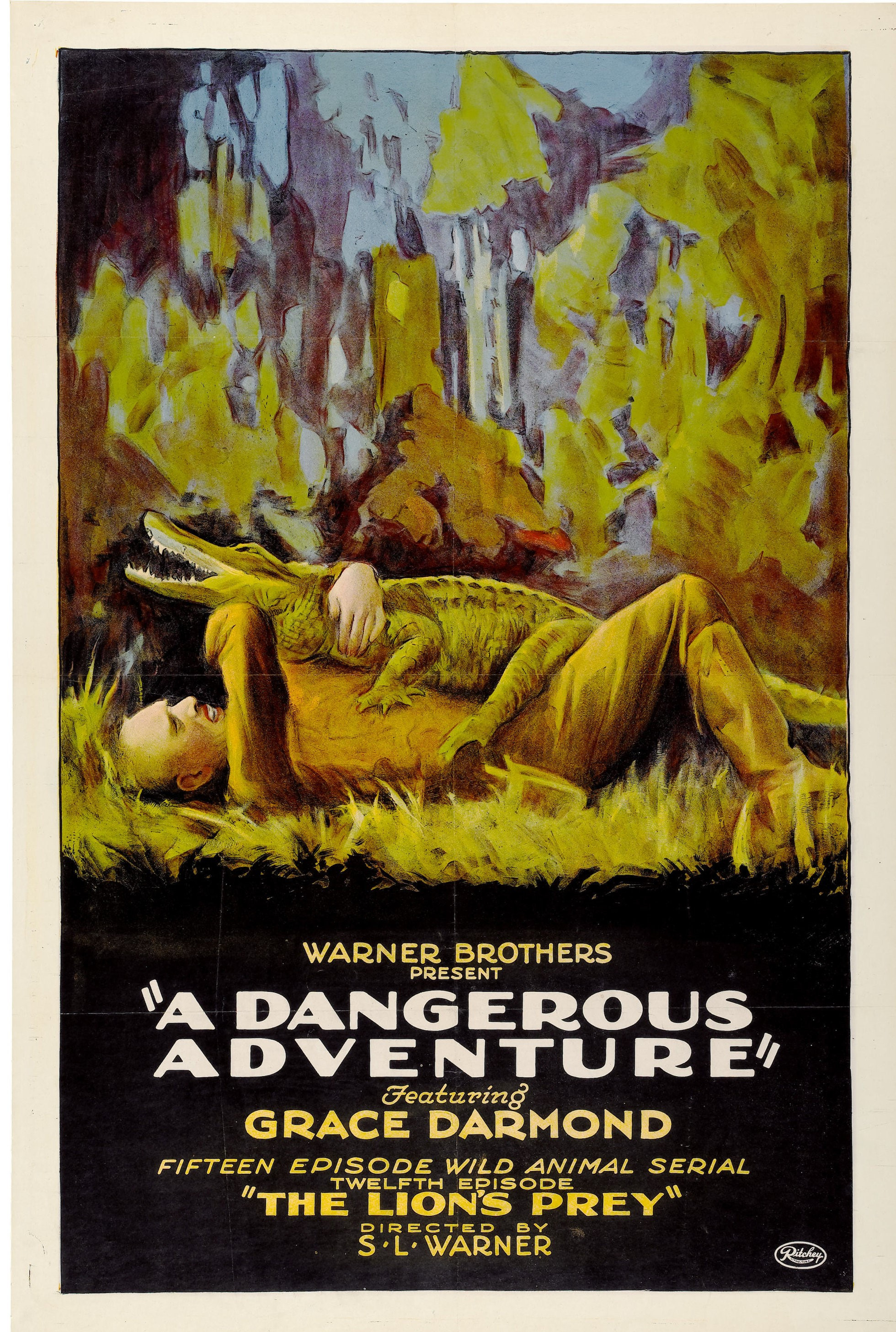 A Dangerous Adventure (1922) A Dangerous Adventure (1922)
“I’ve seen . . . 'A Dangerous Adventure ,' Grace Darmond.” —Robert E. Howard to Tevis Clyde Smith, October 5, 1923 Release Date: November 1, 1922 REH Rating: ***Howard says he saw the movie and mentions the lead actress, Grace Darmond, but says nothing else about this film. A Dangerous Adventure was an original Warner brother’s film, directed by Sam and Jack Warner and it was a 15-part serial. This was a jungle tale, which were extremely popular at the time, largely because of Edgar Rice Burroughs’ Tarzan. In fact, Hollywood had made its first Tarzan movie in 1918, only 6 years after the character first appeared in the pulp magazine The All-Story (October 1912). As this was an adventure serial, each chapter is named with an exciting title: 1. The Jungle Storm 2. The Sacrifice 3. The Lion Pit 4. Brandon's Revenge 5. At the Leopard's Mercy 6. The Traitor 7. The Volcano 8. The Escape 9. The Leopard's Cave 10. The Jungle Water Hole 11. The Hippopotamus Swamp 12. The Lion's Prey 13. In the Tiger's Lair 14. The Treasure Cave 15. The Rescue. According to the Library of Congress, this is a lost film, but the Motion Picture News Booking Guide from April of 1923, describes the film’s plot as follows: “Marjorie and Edith Stanton, accompanied by their uncle are in quest of a treasure chest left by their uncle hidden in a Central African town. The crafty uncle agrees to return Marjorie to the jungle chief in return for a caravan. MacDonald Hayden, in love with Marjorie, and a chum, decide to go to her rescue. In a terrific storm the natives flee the caravan and the uncle is killed. Several adventures precede the rescue of the girls by the American pair." |
|
|
|
Post by linefacedscrivener on Mar 24, 2021 13:12:30 GMT -5
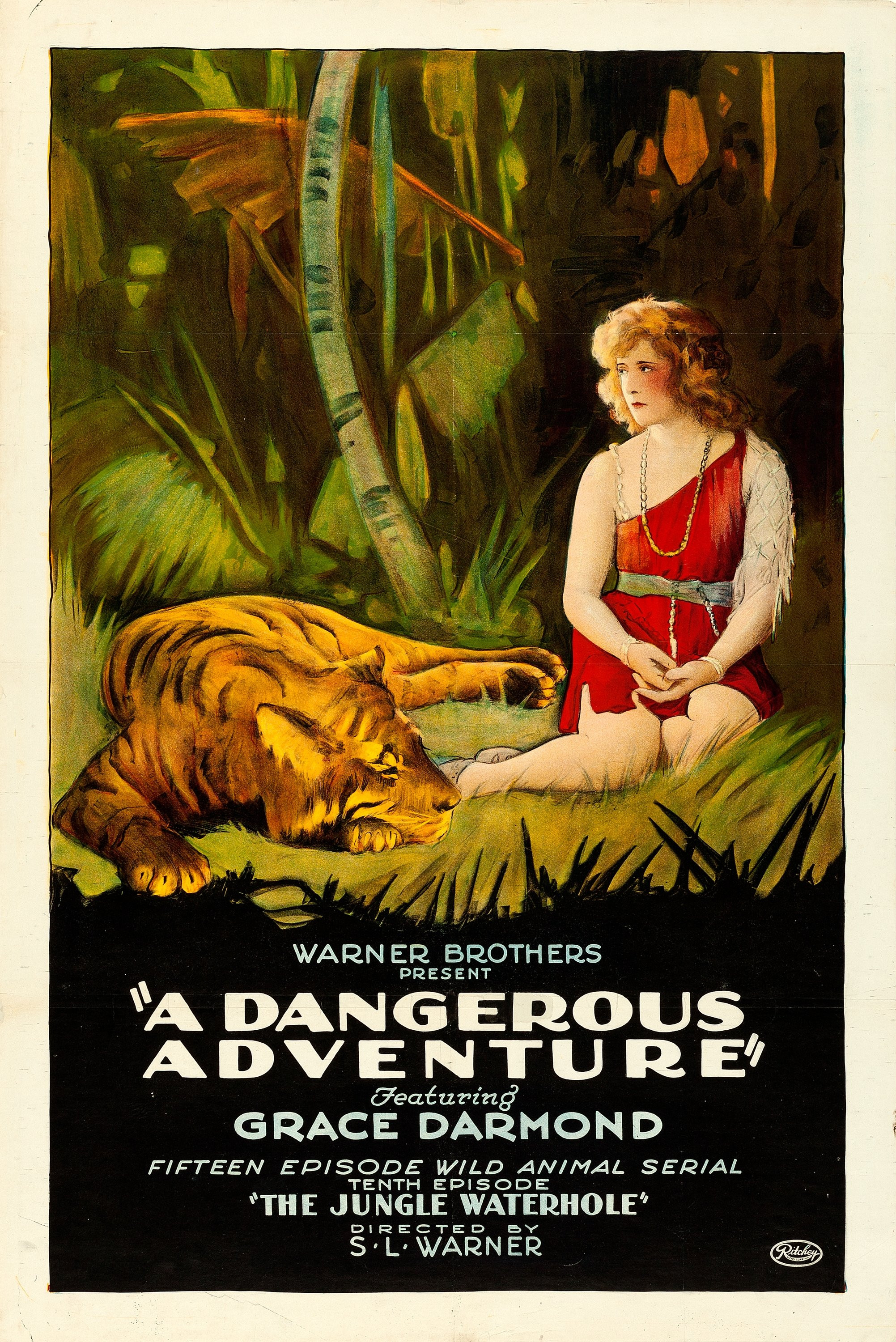 A Dangerous Adventure (1922) A Dangerous Adventure (1922)
“I’ve seen . . . 'A Dangerous Adventure,' Grace Darmond.” —Robert E. Howard to Tevis Clyde Smith, October 5, 1923 The character Marjorie Stanton is played by silent film era actress Grace Darmond (November 20, 1893-October8, 1963). A native of Toronto, Canada, she first became involved in the film industry in 1914. One of her claims to fame was the fact she appeared in the first Technicolor film, The Gulf Between (1917). She also appeared alongside a young Boris Karloff in another 15 part serial, The Hope Diamond Mystery (1921). Darmond, like so many other silent film actresses, was unable to make the transition to “talkies,” and her film career came abruptly to an end. 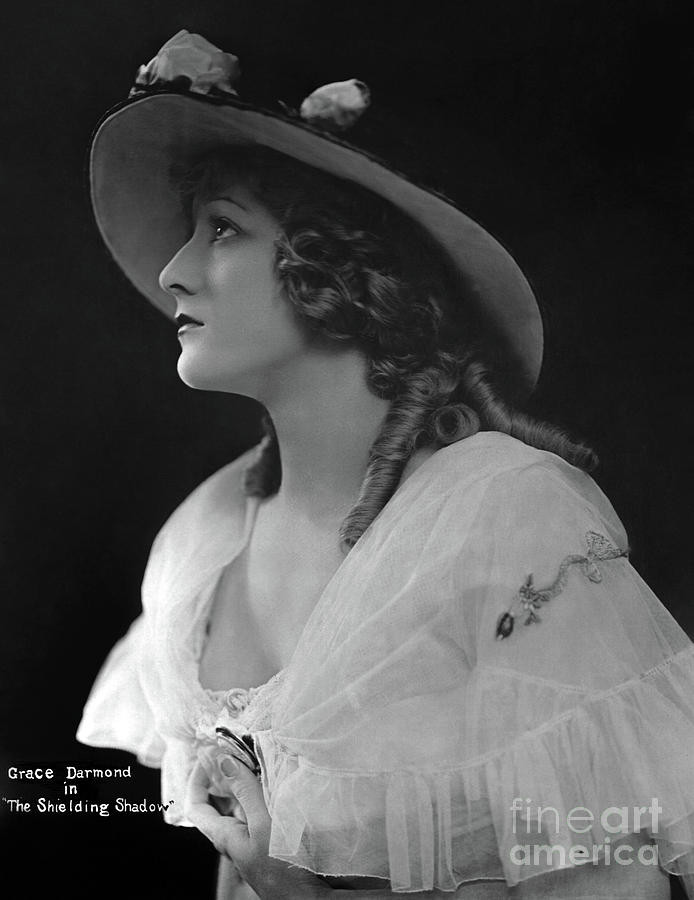 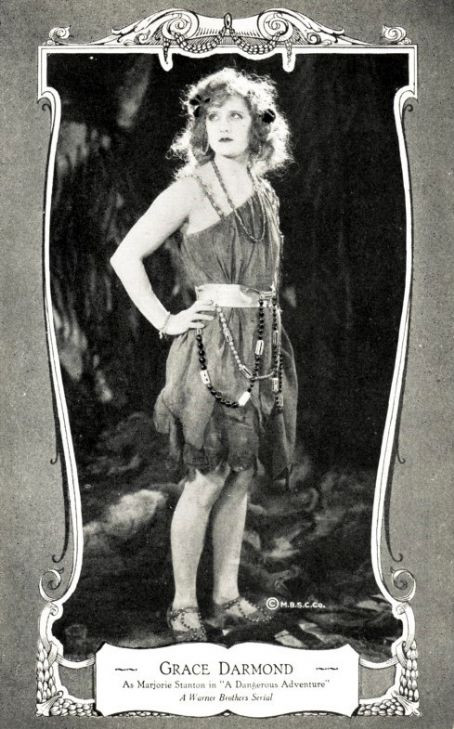 |
|
|
|
Post by linefacedscrivener on Mar 29, 2021 13:32:46 GMT -5
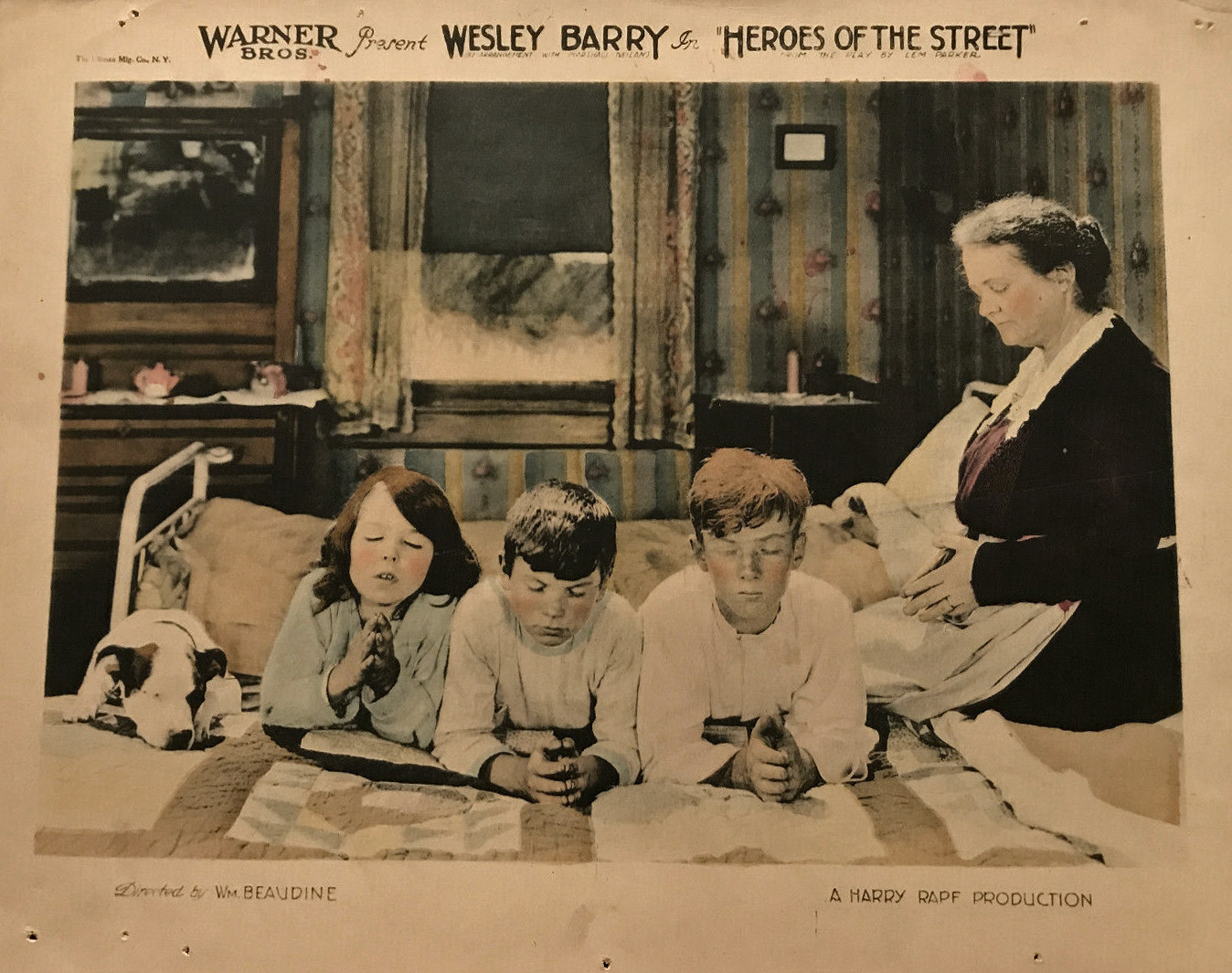 Heroes of the Street (1922) Heroes of the Street (1922)
“I’ve seen . . . Heroes of the Street.” —Robert E. Howard to Tevis Clyde Smith, October 5, 1923 Release Date: December 24, 1922 REH Rating: ***Heroes of the Street (1922) was another movie featuring Wesley Barry (see "Rags to Riches") who played the lead character Mickey Callahan. The film was based on Lem B. Parker’s play, Little Heroes of the Street (1907). One description of the movie on the Internet Movie Database describes the film in a straight-forward manner: “When a smart-alec street kid's father, a policeman, is killed in the line of duty, the boy turns over a new leaf and goes to work to support his mother, brothers and sisters. He gets a job as an usher in a theater, but really wants to become a policeman to avenge the death of his father. He soon finds himself involved in a fake kidnapping, real gangsters and a tip on the identity of the man who killed his dad.” The American Film Institute (AFI) gives a more detailed synopsis, highlighting the fact that the murderer is the notorious criminal “the Shadow” (not to be confused with the crime-fighter of the same name as this film predates him): “Mike Callahan, one of ‘New York's finest,’ is killed in the line of duty, and his murderer is not captured although ‘The Shadow’ is suspected. Mike's young son, Mickey, bravely tries to act as head of the family, and through his friend, Broadway chorus girl Betty Beaton, he gets a job as property boy. Betty is in love with Howard Lane, but to further her career she accepts the attentions of wealthy Gordon Trent, then agrees with him to undergo a phony kidnapping as a publicity stunt. Unwittingly, Mickey tries to rescue Betty, uncovers a blackmail plot against her, and discovers Trent is not only ‘The Shadow’ but also his father's murderer. The film was released by Warner Brothers on Christmas Eve of 1922, with a 60 minute run time delivered on 6 reels. The film’s production budget was $110,000, and it is reported to have made $396,000. Although not on the Library of Congress list of lost films, there appears to be no copy available. 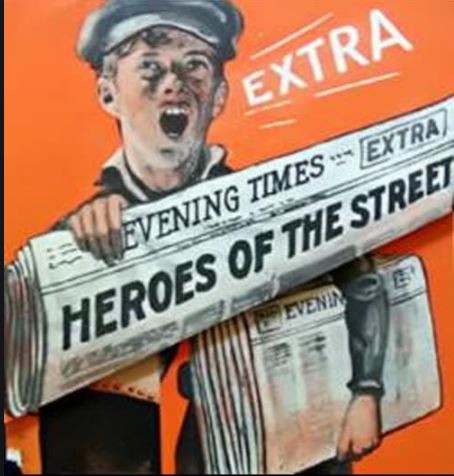 |
|
|
|
Post by linefacedscrivener on Apr 1, 2021 14:25:47 GMT -5
 Heroes of the Street (1922) Heroes of the Street (1922)
“I’ve seen . . . Heroes of the Street.” —Robert E. Howard to Tevis Clyde Smith, October 5, 1923 Marie Prevost (born Marie Bickford Dunn; November 8, 1896 – January 21, 1937) plays the role of Betty Beaton in the movie Heroes of the Street (1922). She was born in Sarnia, Ontario and moved with her parents to America at a young age, living in a number of towns, before they settled in Los Angeles, California. There, she was discovered by Mack Sennett (famous for those wild and wacky Keystone Cops shorts). At the time, in 1915, Sennett wanted her for his short films known widely as "the Bathing Beauties" films. They were basically short films of young women in revealing swimsuits (revealing for the time period mind you), and Prevost appeared in a number of them. From there, she landed a number of good roles in the silent pictures, including The Beautiful and Damned (1922) based on F. Scott Fitzgerald's book by the same name. She was also picked up by Howard Hughes for The Racket (1928). Her life took a downward trend after losing both of her parents and she began drinking heavily, gained weight, and then the talkies hit. She stayed alive in the films until 1936 and with her life until 1937, dying of acute alcoholism at the age of 40. 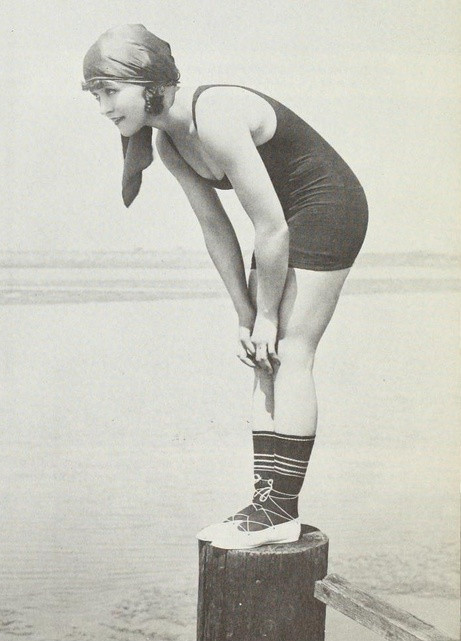 An example of the Bathing Beauty film shorts: |
|
|
|
Post by linefacedscrivener on Apr 5, 2021 13:32:34 GMT -5
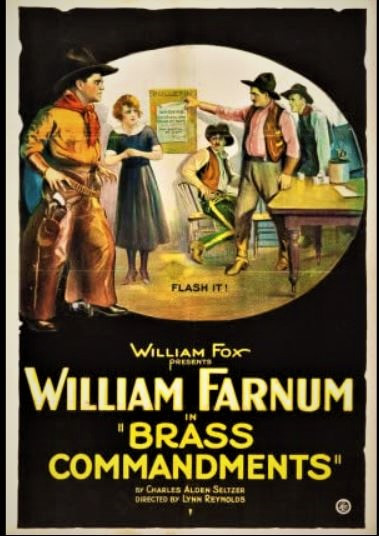 Brass Commandments (1923) Brass Commandments (1923)
“I’ve seen . . . Brass Commandments, William Farnum.” —Robert E. Howard to Clyde Smith, October 5, 1923 Release Date: January 28, 1923REH Rating: ***
This film is on the Library of Congress’s list of lost films, and little is known about the movie itself. The synopsis of the film is recorded by The American Film Institute, which tell us the basic plot of the film: “Flash Lanning returns to Bozzam City from the East to put an end to cattle rustling. Gloria Hallowell, who has known him by reputation, falls in love with Lanning but believes that he loves Ellen Bosworth, an eastern ‘lady.’ Campan, the leader of the rustlers, hoping to lure Lanning into a trap, kidnaps both girls. Lanning rescues the girls, punishes Campan, and indicates to Gloria that she is the girl for him.” A longer description of the film comes from Exhibitor's Trade Review, from February of 1923, which provides this overview: "Flash Lanning (Farnum) returns West as the request of the sheriff to put an end to the cattle rustling. In the small hotel he finds a big bully attempting to kiss Gloria Hallowell (Hawley), the young woman at the desk, and he immediately goes to her assistance. She does not recognize him but tells him of her love for Lanning, although she has never met him. Flash does not tell her that he is that man, and when she finds out later, she changes her feelings in the matter. Flash is attacked by Campan (Santschi), the leader of the local gang, but he overpowers him and tells the man to leave town. Ellen Bosworth (Adams), returning to her ranch, overhears that supposed friend Clearwater (Gordon) is one of the rustlers. She tells Flash of this, and he forces Clearwater to warn him of when the next raid will be conducted. However, Campan captures the two young women and takes them into the desert. Flash learns of this and sets out in pursuit. A sandstorm overtakes Campan and his party and they are about to perish when Flash arrives. He rescues the two young women and leaves Campan to his fate. He tells Gloria of his love for her and she of her love for him." The film was released on five reels and ran for 50 minutes. In the same trade magazine listed above, they had the following four still photos from the picture, perhaps about the only thing left of the original movie: 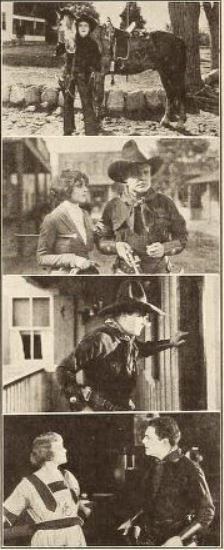 |
|
|
|
Post by linefacedscrivener on Apr 8, 2021 14:06:12 GMT -5
 Brass Commandments (1923) Brass Commandments (1923)
“I’ve seen . . . Brass Commandments, William Farnum.” —Robert E. Howard to Clyde Smith, October 5, 1923 When it comes to Brass Commandments, there is actually much more information on the book the movie was based on, rather then the film itself. The book held the same title, Brass Commandments and was written by Charles Alden Seltzer.  Seltzer was born on August 15, 1875 in Janesville, Wisconsin, and worked as a newsboy, painter, and telegraph messenger, before becoming the editor of a small town newspaper. It was at that time Seltzer began writing in the hopes of breaking into the writing profession as a western author. Seltzer struggled hard, having written approximately 200 stories before he finally caught a break. Once he caught that break, however, his work began publishing in such pulps as Adventure, Western Story Magazine, and Argosy.
Seltzer spent most of his life in Wisconsin, even being elected the mayor of North Olmsted, Ohio, in 1930. He had, however, lived for five years in New Mexico, so most of his westerns were based on his experiences while living there. Starting in 1911, he published fairly consistently, authoring over 40 books throughout his life.  The novel Brass Commandments first appeared in Argosy All-Story Weekly, beginning with the May 20, 1922 issue, dubbed the "serial in six shots.” His novel was featured on the cover of that issue, and the story finished in the June 24, 1922, issue of the magazine. The Argosy novel was then optioned for the movie and filmed that fall. The movie was apparently a success, as it featured William Farnum, one of the most popular actors of the silent era, as well as one of the highest paid. Probably because of the success of the movie, the novel was published by several publishing firms. 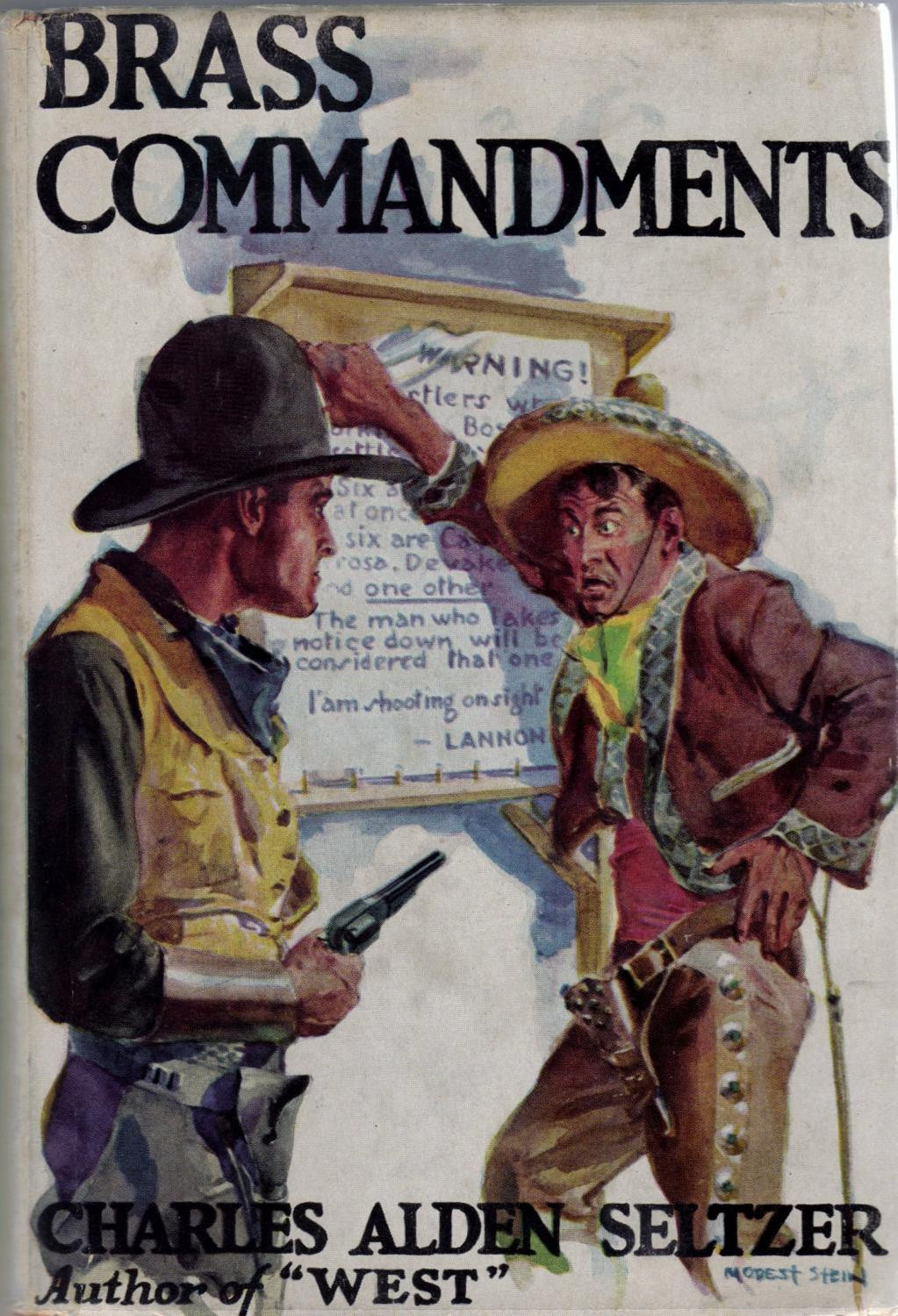 The first was from The Century Company in 1923 above. 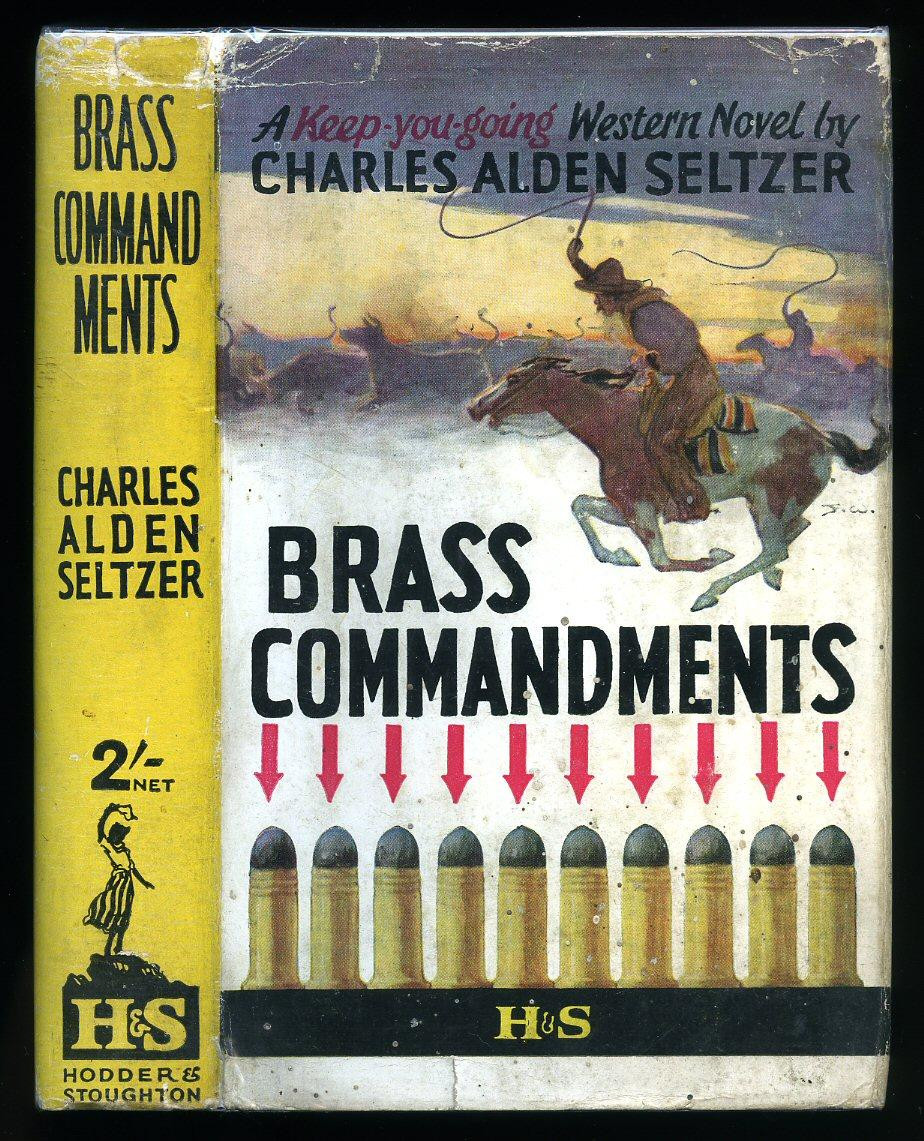 Then Grosse & Dunlap published the novel as a hardback in 1924, and the novel appeared in London England with Hodder & Stoughton in 1925 (pictured above). |
|
|
|
Post by linefacedscrivener on Apr 9, 2021 10:04:17 GMT -5
 Brass Commandments (1923) Brass Commandments (1923)
“I’ve seen . . . Brass Commandments, William Farnum.” —Robert E. Howard to Clyde Smith, October 5, 1923 Howard mentions William Farnum by name when he lists the film Brass Commandments as one of the films he had recently watched, most likely because his was a big-time name in the silent pictures. Farnum was born in Boston, Massachusetts on July 4, 1876, but grew up in Bucksport, Maine. His entire family consisted of actors, so he naturally when into the profession himself, beginning at the age of 10. At the age of 24, he was appearing on Broadway in the title roles of such productions as Ben-Hur. He then ended up in films, beginning in 1914 with a movie short, but followed by the lead role in the 1914 film, based on Rex Beach's novel by the same name, The Spoilers. Interestingly, this film has survived. By the following year, William Farnum had become one of the first movie idols of fans and he appeared in numerous films in the lead role, including playing Sam Houston in The Conqueror (1917), Jean Valjean in Les Misérables (1917), and Lassiter in Riders of the Purple Sage (1918). Other films that probably would have struck Robert E. Howard's fancy were The Lone Star Ranger (1919) and The Adventurer (1920). By the time he made Brass Commandments (1923), he was the highest paid actor in Hollywood and he was in high demand. When the silent films passed over to "the talkies," unlike so many other actors at the time, Farnum easily made the transition and his career and the quality of his films only increased. His roles changed over time as he got older, but he was still making films in 1952, his last film being Jack and the Beanstalk (1952) with one of my favorite comedy duos, Abbott and Costello. Farnum was 75. Over his lifetime he was married three times and had five children. He died of cancer on June 5, 1953.  |
|
|
|
Post by linefacedscrivener on Apr 9, 2021 13:42:43 GMT -5
 The Lyric Theater, Brownwood, Texas The Lyric Theater, Brownwood, TexasAs "Howard at the Movies" is now up and running and we are in the early part of 1923 (based on movie release dates), I thought I would interject a little note regarding where Howard watched some of his movies. In the fall of 1922, Robert and his mother, Hester, moved to Brownwood, Texas, in order to complete his high school education. They rented room in a home at 316 Wilson Street, a short walk to the school. It was also, however, a short walk to The Lyric, the movie theater in town as shown above in the photo (the date for which, judging by the sign for the James Cagney film, is 1940). We also know that he watched films in his hometown, Cross Plains, as a one point in time it would seem they had four movie theaters, but generally two to three. Rob Roehm, who has done some stellar research into the life and history of Robert E. Howard wrote his own article titled "Robert E. Howard and the Movies" in which he discusses Howard's year in Brownwood. Because what Howard mentions in his letters is certainly not all the movies Howard ever watched, his full viewing habits will never be known. Rob, however, notes that the first step in getting some idea is the opportunity he had to watch films, so he created a list of all the films showing in Brownwood, at The Lyric, while he was attending school (September 11, 1922 to May 18, 1923. Link to Rob Roehm's article here: howardhistory.com/2020/10/06/the-best-of-the-old-reh-foundation-website/And here are a few of the ads that Howard may have seen in the local newspaper while there, The Brownwood Bulletin: 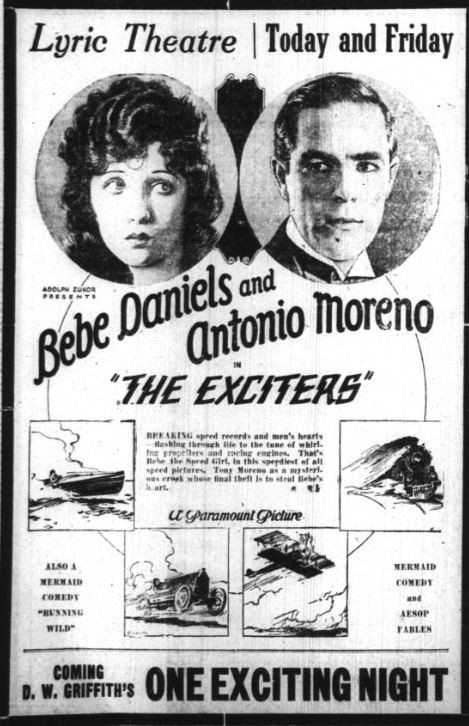 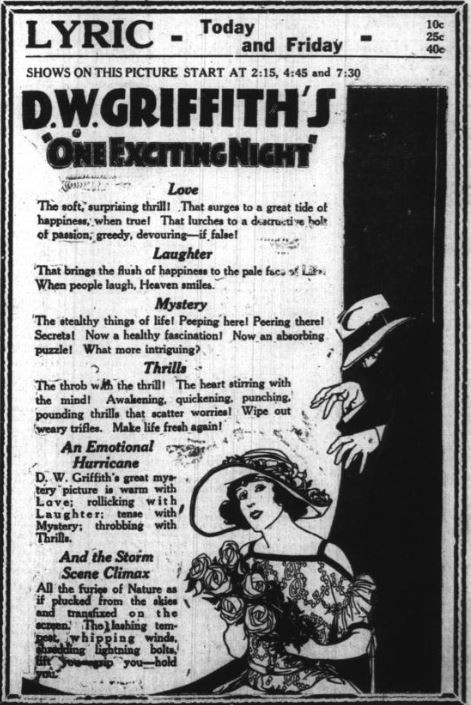 |
|
|
|
Post by linefacedscrivener on Apr 13, 2021 10:28:54 GMT -5
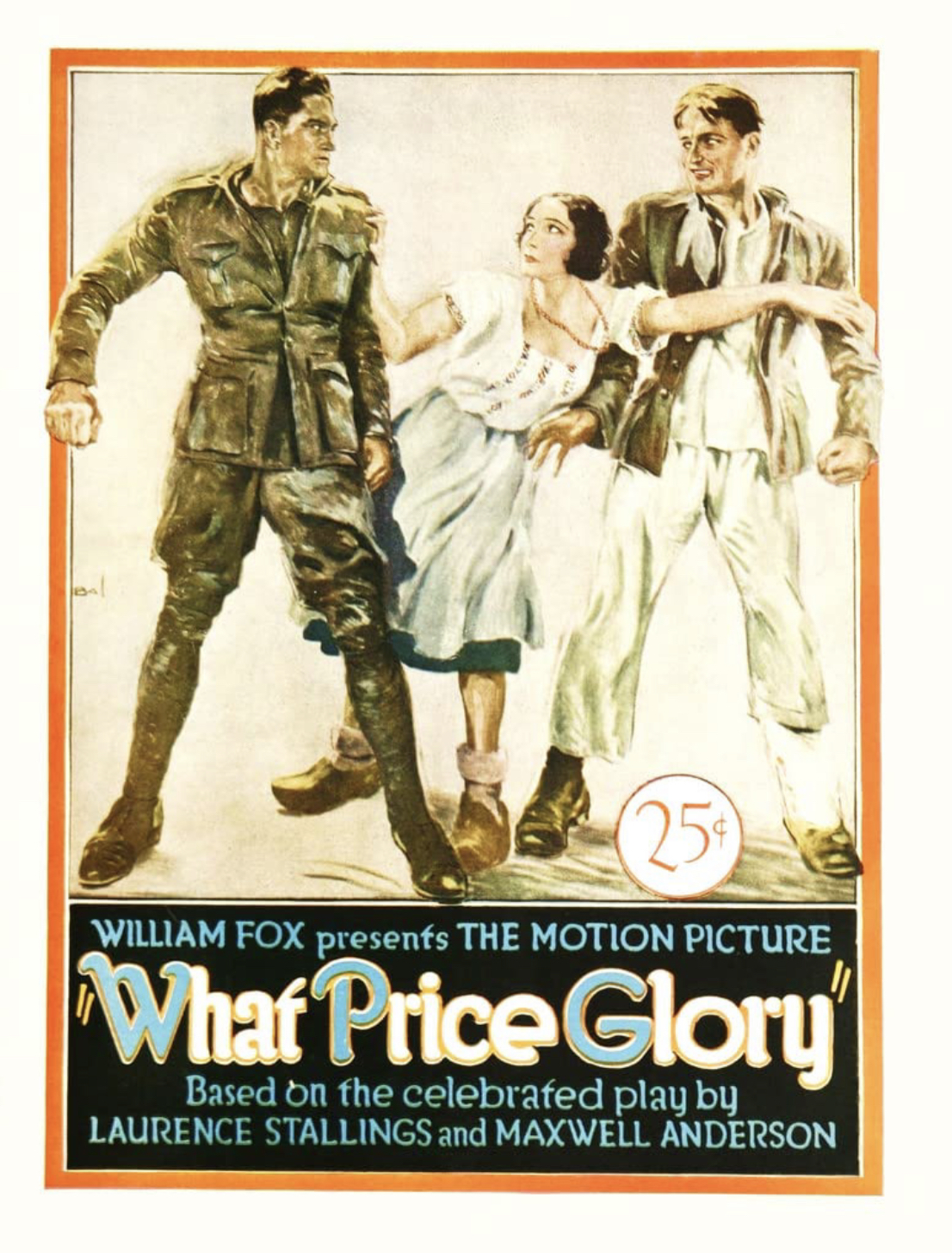 "I saw . . . What Price Glory which is in my opinion the nearest thing to a masterpiece ever filmed. Those boys were tough, though frankly not as tough as I expected, though if they had been any more so they would have seemed brutal and would have lost the sympathy of the spectators, I reckon. Sammy Cohen is the damndest looking Jew in the game. I give the laurel to Victor [McLaglen], too. I think he had more chance to show his stuff, of course; still, I like his type, boy, I sure like his type. Edmund Lowe was great, too.” —Robert E. Howard to Harold Preece, ca. June 1928 Release Date: November 23, 1926 REH Rating: *****
What Price Glory? was a highly popular film upon its release in 1926, and not just with Howard. Audiences fell in love with the music, the rivalry between “Flagg” and “Quirt,” and the beautiful Dolores Del Rio. According to the 1929 Film Daily Year Book, not only was the film voted the “Top Best Features” of 1926, it was again given that distinction again in 1927. According to the American Film Institute, the film is about: “Captain Flagg and Sergeant Quirt, two hard-boiled U. S. Marines, [who] are fierce rivals in China and the Philippines, particularly in regard to women. In a small French village, the two marines encounter the fiery Charmaine, who gives her love freely to both men. Flagg wins her in a gamble but, learning that she actually prefers Quirt, relents out of respect. Twice the rival comrades return from the trenches; and on their third call to the front, Flagg, though on leave, starts with the company, and Quirt, wounded, calls out to his friend. Charmaine sadly reflects that though they have come back twice, they will not return again.” The trailer and several clips from the movie are available on the web, but I have been unable to track down a copy of the the actual movie itself either online or for purchase. According to the Library of Congress, the film is not on the list of lost films, so one would think a copy would be available. The website “Silent Era” does note that a print is preserved at the George Eastman Museum. Here is the original trailer for the film: And a segment of the film to give you an idea of why Howard liked this film so much: |
|
|
|
Post by johnnypt on Apr 13, 2021 12:17:07 GMT -5
Yeah, that's DEFINITELY a film after Howard's own heart. It's been on TCM's Silent Sundays as has a couple of the sound sequels, surprised it's not easier to find.
|
|




























